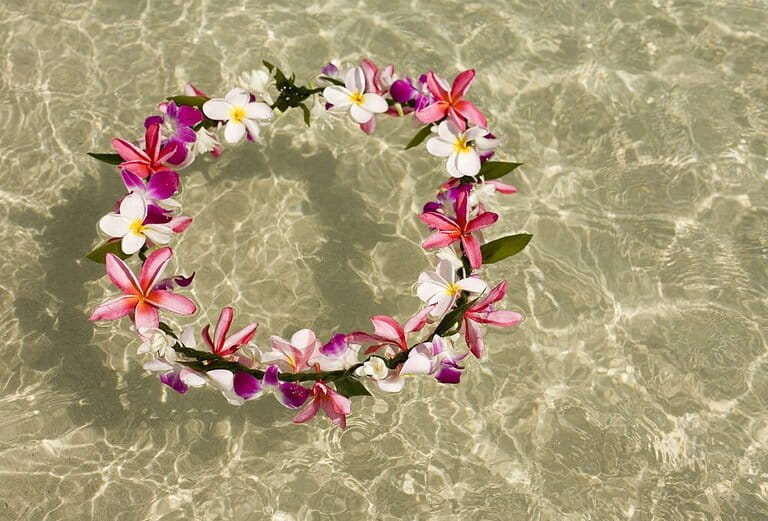The islands of Hawaii are famous for their lush tropical flora and vibrant flower leis. But do Hawaiians regularly wear flower leis in their daily lives? Here is an in-depth look at the cultural significance and modern usage of flower leis in Hawaiian culture.
The History and Meaning of the Flower Lei
Flower leis have long been an important cultural symbol in Hawaii. In ancient Hawaiian culture, leis made of flowers, leaves, shells, feathers and even animal bones were used to signify special occasions. Fresh flower leis were commonly given as a sign of affection, honor or celebration. For example, vibrant leis were traditionally used to welcome visitors, crown royalty, honor warriors returning from battle, celebrate weddings or births, and decorate altars.
The word "lei" in the Hawaiian language refers to a garland or wreath. But the cultural meaning behind presenting a lei runs much deeper. It is seen as a way to transfer the mana (spiritual essence) of the giver onto the recipient. When someone places a lei around your neck, they are sharing their spirit with you. So wearing a lei is considered an honor and sign of mutual respect.
Over time, the significance of the flower lei has also expanded. Each Hawaiian island has its own iconic lei made from native plants. Wearing a lei can show pride in your island and share its natural beauty. Leis are also used to celebrate major life events beyond Hawaiian culture. For instance, graduates may wear leis at commencement to honor their achievement.
Do Modern Hawaiians Wear Flower Leis Regularly?
Today, fresh floral leis remain an important cultural symbol most often worn on ceremonial occasions in Hawaii. But locals do not typically wear them in everyday situations. Here are some insights into modern lei wearing practices:
- Visitors and Tourists - When arriving in Hawaii, it is customary for visitors to be greeted with a fresh flower lei during their airport welcome. Hotels and tour companies also frequently offer lei greetings. So tourists may find themselves wearing leis as they explore the islands. But locals themselves reserve leis for more special occasions.
- Ceremonies and Events - On major ceremonies in Hawaiian culture, such as graduations, weddings, funerals or ceremonial dances (hula), locals do commonly wear flower leis. Leis mark the significance and solemnity of these meaningful events. Fresh floral leis are the most traditional and sacred.
- Casual or Everyday Use - While flower leis hold deep cultural meaning, Hawaiians today do not wear fresh floral leis daily. In everyday modern contexts, traditional leis are considered too ceremonial. But casual plastic lei necklaces are sometimes worn in relaxed settings or celebrations. Brightly colored orchid leis for graduations are a common sight.
- Selling Leis to Tourists - Floral lei stands and shops catering to visitors are ubiquitous across Hawaii. While locals do not regularly buy leis for themselves, the vibrant blooms remain an iconic Hawaiian souvenir. Tourists may spot locals wearing and selling leis daily, but notice they do not typically wear them outside of work or cultural events.
So in summary, while flower leis are a time-honored Hawaiian tradition, their significance means they are not worn casually every day. You will not see locals walking down the street in fresh floral leis like those given to arriving visitors. But they do remain an integral part of ceremonies and formal events honoring Hawaiian culture and heritage.
Modern Revival of Flower Leis
In recent years, there has been a movement among some younger Hawaiians to revive the cultural pride and daily wearing of flower leis:
- Cultural Identity - For Native Hawaiians fighting to preserve their language and traditions against Westernization, wearing leis more regularly is seen as reclaiming identity. Flowers can represent living Hawaiian culture.
- Artistic Expression - Contemporary Hawaiian artists are also incorporating leis into edgy fashion or performance art as cultural expression. Shows like the annual Lei Doo on Oahu feature creative contemporary lei art.
- Casual Wear - With floral crowns and leis growing trendy worldwide, some Hawaiians feel less shy about wearing casual plastic lei necklaces daily as a way to share their heritage.
- Political Statement - Wearing leis can also be a subtle anti-colonialist statement. After the US illegal overthrow of the Hawaiian kingdom, leis were banned in schools as "primitive." Reclaiming them resists cultural erasure.
- Environmental Cause - Native blooms like maile and pikake promote biodiversity and share the islands' natural beauty.
So while not yet commonplace, more young Hawaiians are starting to integrate leis into everyday life. With sincere respect paid to their traditional significance, they hope to normalize local pride and share the living spirit of aloha.
Conclusion
Flower leis have profoundly deep cultural roots in Hawaii as tokens of affection, honor and celebration. While tourists may be greeted with fresh leis anywhere in the islands, locals themselves reserve them for meaningful events and ceremonies out of respect. In the past, Hawaiians did not typically wear leis in their regular daily activities. However, recent movements to revive traditions, especially among youth, are beginning to shift perceptions. With the right mindset, locals may continue to find more casual, creative ways to incorporate leis into modern life while still honoring their heritage. So over time, it will be interesting to see if more locals adopt the daily wearing of flower leis once again as emblems of Hawaiian culture.












